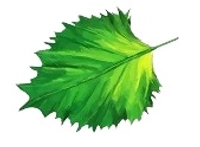Nyctanthes Arbortristis (Night Jasmine)
Nyctanthes Arbortristis, commonly known as Night Jasmine or Parijat, is a beautiful flowering tree native to India. Known for its fragrant white and orange blossoms that bloom in the evening and fall by morning, this tree holds cultural and medicinal significance. It is a small deciduous tree that can reach a height of 3 to 10 meters, making it a perfect addition to gardens, parks, and landscapes.
Benefits:
- Aesthetic Appeal: The fragrant flowers of the Night Jasmine tree enhance the beauty of any garden or outdoor space, especially during the evening when the aroma fills the air.
- Medicinal Value: In traditional Indian medicine, the flowers, leaves, and bark of the Nyctanthes Arbortristis are used for their therapeutic properties. It is known to help in treating ailments such as fever, asthma, arthritis, and menstrual disorders.
- Air Purification: As with many trees, the Night Jasmine helps purify the air by absorbing carbon dioxide and releasing oxygen, making it an ideal plant for urban gardens.
- Cultural Significance: In India, the tree is associated with divine and spiritual beliefs, often mentioned in folklore and used in religious ceremonies.
Plant Care Instructions:
- Sunlight: Nyctanthes Arbortristis thrives in full sunlight. Plant it in a location that receives at least 6 hours of direct sunlight daily.
- Soil: The tree prefers well-drained, fertile soil. It can tolerate a range of soil types, but a slightly acidic to neutral pH is ideal.
- Watering: Water the plant regularly, especially during dry spells. However, ensure that the soil is well-drained to prevent waterlogging, which can lead to root rot.
- Fertilization: Apply a balanced fertilizer during the growing season (spring and summer) to encourage healthy growth and abundant blooms. Avoid over-fertilizing, as this can lead to excessive foliage growth at the expense of flowers.
- Pruning: Prune the tree to remove dead or diseased branches and maintain a compact shape. Regular pruning also encourages better flowering.
Common Problems and Solutions:
- Yellowing Leaves: This can be a sign of overwatering or poor drainage. Ensure the soil drains well and reduce watering if the soil remains too wet.
- Pests: The tree may attract pests such as aphids and mealybugs. Use neem oil or an insecticidal soap to treat the infestation.
- Poor Flowering: If the tree is not flowering, it could be due to insufficient sunlight or nutrient imbalance. Ensure it receives adequate sunlight and apply a balanced fertilizer.
- Root Rot: If the roots are waterlogged, they may rot. Ensure the plant is not sitting in water and provide proper drainage.
Please Note: Images are for reference purposes only. Actual product may vary in shape or appearance based on climate, age, height, etc. The product is replaceable but not returnable. Plants will be delivered in black nursery poly bag or pot unless mentioned on the product page.
